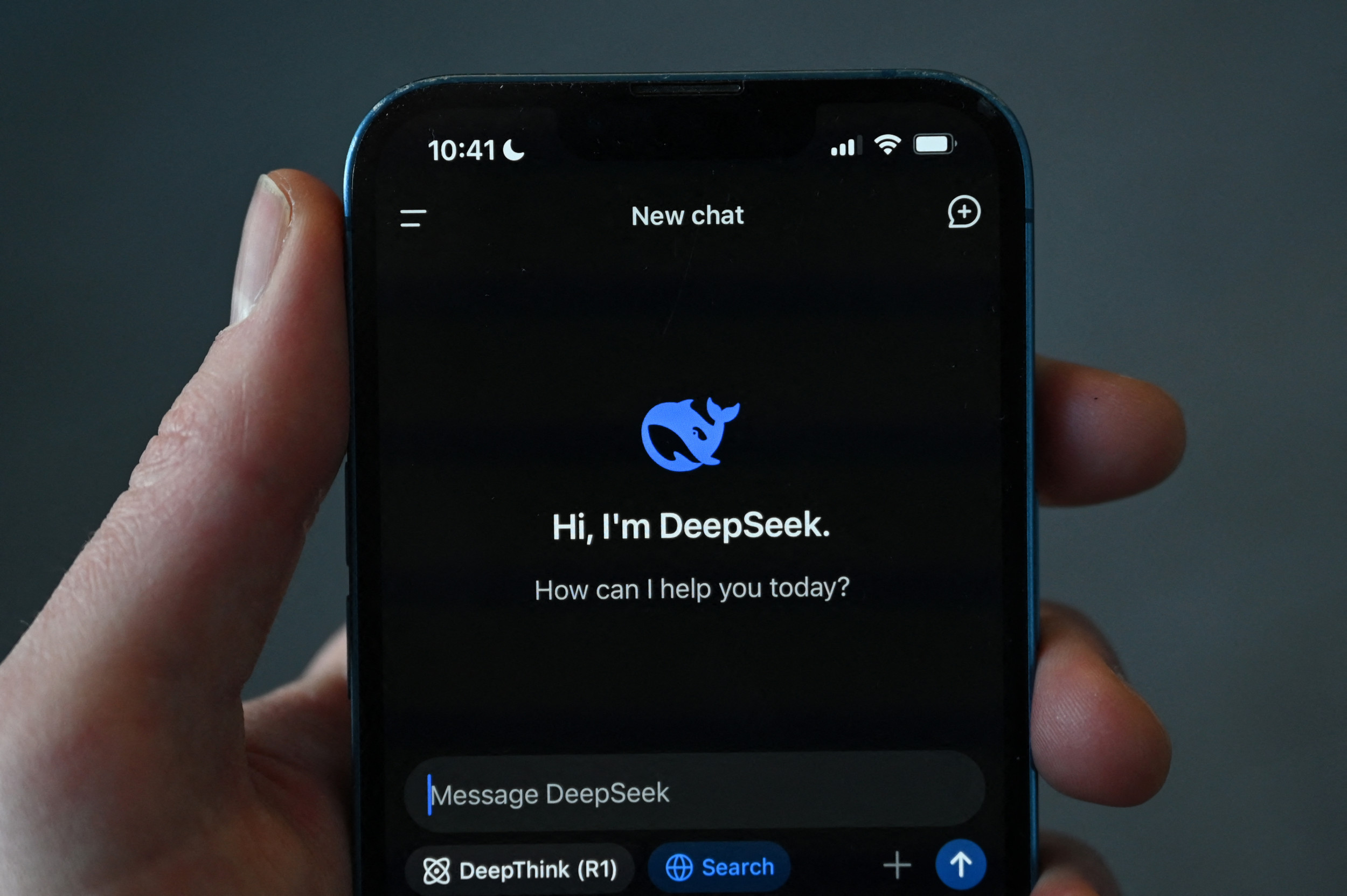
We've been tracking the explosive increase of DeepSeek R1, which has taken the AI world by storm in recent weeks. In this session, we dove deep into the advancement of the DeepSeek household - from the early models through DeepSeek V3 to the advancement R1. We likewise checked out the technical innovations that make R1 so special in the world of open-source AI.

The DeepSeek Family Tree: From V3 to R1

DeepSeek isn't simply a single model; it's a household of significantly sophisticated AI systems. The advancement goes something like this:
DeepSeek V2:
This was the foundation model which leveraged a mixture-of-experts architecture, where only a subset of professionals are utilized at reasoning, drastically enhancing the processing time for each token. It also included multi-head latent attention to minimize memory footprint.
DeepSeek V3:
This design introduced FP8 training methods, which assisted drive down training expenses by over 42.5% compared to previous versions. FP8 is a less exact way to keep weights inside the LLMs but can significantly improve the memory footprint. However, training utilizing FP8 can usually be unstable, and it is tough to obtain the desired training outcomes. Nevertheless, DeepSeek utilizes numerous techniques and attains remarkably steady FP8 training. V3 set the stage as a highly effective design that was already economical (with claims of being 90% less expensive than some closed-source options).
DeepSeek R1-Zero:
With V3 as the base, the group then presented R1-Zero, the first reasoning-focused model. Here, the focus was on teaching the model not simply to produce responses but to "believe" before answering. Using pure support knowing, the design was motivated to generate intermediate thinking actions, for example, taking additional time (often 17+ seconds) to overcome a basic problem like "1 +1."
The essential innovation here was making use of group relative policy optimization (GROP). Instead of relying on a conventional process benefit design (which would have needed annotating every action of the thinking), GROP compares several outputs from the design. By sampling a number of potential responses and scoring them (using rule-based steps like precise match for math or verifying code outputs), the system learns to prefer thinking that causes the right result without the need for explicit supervision of every intermediate idea.
DeepSeek R1:
Recognizing that R1-Zero's unsupervised approach produced reasoning outputs that could be tough to check out or perhaps mix languages, the developers returned to the drawing board. They used the raw outputs from R1-Zero to generate "cold start" information and then by hand curated these examples to filter and improve the quality of the reasoning. This human post-processing was then utilized to fine-tune the original DeepSeek V3 model further-combining both reasoning-oriented reinforcement learning and supervised fine-tuning. The outcome is DeepSeek R1: a model that now produces readable, meaningful, and trusted reasoning while still maintaining the effectiveness and cost-effectiveness of its predecessors.
What Makes R1 Series Special?
The most fascinating element of R1 (no) is how it developed reasoning abilities without specific guidance of the thinking process. It can be further improved by utilizing cold-start information and supervised reinforcement learning to produce understandable thinking on basic jobs. Here's what sets it apart:

Open Source & Efficiency:

R1 is open source, allowing researchers and developers to examine and build on its developments. Its expense efficiency is a significant selling point especially when compared to closed-source designs (claimed 90% more affordable than OpenAI) that need huge calculate budgets.
Novel Training Approach:
Instead of relying exclusively on annotated thinking (which is both pricey and lengthy), the model was trained utilizing an outcome-based technique. It began with easily verifiable tasks, such as mathematics issues and coding exercises, where the correctness of the last response might be quickly measured.
By utilizing group relative policy optimization, the training procedure compares several created answers to determine which ones satisfy the wanted output. This relative scoring system permits the design to find out "how to believe" even when intermediate reasoning is created in a freestyle way.
Overthinking?
A fascinating observation is that DeepSeek R1 sometimes "overthinks" easy issues. For example, when asked "What is 1 +1?" it may invest almost 17 seconds examining various scenarios-even considering binary representations-before concluding with the proper answer. This self-questioning and confirmation process, although it might appear ineffective at very first look, might show useful in complex jobs where much deeper reasoning is needed.
Prompt Engineering:
Traditional few-shot prompting strategies, which have actually worked well for lots of chat-based models, can in fact degrade performance with R1. The designers advise utilizing direct issue declarations with a zero-shot technique that defines the output format plainly. This guarantees that the design isn't led astray by extraneous examples or hints that may interfere with its internal reasoning procedure.
Getting Started with R1
For those aiming to experiment:
Smaller variations (7B-8B) can operate on customer GPUs or perhaps just CPUs
Larger versions (600B) need significant calculate resources
Available through significant cloud companies
Can be deployed locally through Ollama or vLLM
Looking Ahead
We're especially interested by several implications:
The capacity for this approach to be applied to other reasoning domains
Effect on agent-based AI systems typically developed on chat models
Possibilities for integrating with other supervision methods
Implications for business AI release
Thanks for reading Deep Random Thoughts! Subscribe for totally free to receive brand-new posts and support my work.
Open Questions
How will this affect the development of future thinking models?
Can this approach be reached less verifiable domains?
What are the implications for multi-modal AI systems?
We'll be seeing these advancements closely, particularly as the neighborhood begins to explore and build on these methods.
Resources
Join our Slack neighborhood for ongoing discussions and updates about DeepSeek and other AI advancements. We're seeing remarkable applications currently emerging from our bootcamp participants dealing with these models.
Chat with DeepSeek:
https://www.deepseek.com/
Papers:
DeepSeek LLM
DeepSeek-V2
DeepSeek-V3
DeepSeek-R1
Blog Posts:
The Illustrated DeepSeek-R1
DeepSeek-R1 Paper Explained
DeepSeek R1 - a short summary
Cloud Providers:
Nvidia
Together.ai
AWS
Q&A
Q1: Which model is worthy of more attention - DeepSeek or Qwen2.5 Max?
A: While Qwen2.5 is also a strong design in the open-source community, the choice eventually depends on your use case. DeepSeek R1 highlights sophisticated reasoning and a novel training method that might be especially important in jobs where proven reasoning is important.
Q2: Why did major providers like OpenAI choose monitored fine-tuning instead of reinforcement learning (RL) like DeepSeek?
A: We must note in advance that they do use RL at the very least in the form of RLHF. It is most likely that models from major suppliers that have reasoning capabilities already use something similar to what DeepSeek has actually done here, however we can't make certain. It is likewise most likely that due to access to more resources, they favored monitored fine-tuning due to its stability and the prepared availability of big annotated datasets. Reinforcement learning, although effective, can be less predictable and more difficult to manage. DeepSeek's method innovates by using RL in a reasoning-oriented way, allowing the model to learn effective internal reasoning with only very little process annotation - a strategy that has proven promising regardless of its intricacy.
Q3: Did DeepSeek use test-time calculate strategies similar to those of OpenAI?
A: DeepSeek R1's design stresses effectiveness by leveraging strategies such as the mixture-of-experts approach, which triggers just a subset of specifications, to decrease compute during inference. This concentrate on effectiveness is main to its cost benefits.
Q4: What is the distinction in between R1-Zero and R1?
A: R1-Zero is the initial model that discovers thinking entirely through reinforcement learning without explicit procedure guidance. It creates intermediate reasoning actions that, while sometimes raw or combined in language, function as the foundation for knowing. DeepSeek R1, on the other hand, refines these outputs through human post-processing and monitored fine-tuning. In essence, R1-Zero supplies the not being watched "stimulate," and R1 is the refined, more coherent variation.
Q5: How can one remain updated with in-depth, technical research while handling a busy schedule?
A: Remaining current involves a mix of actively engaging with the research neighborhood (like AISC - see link to join slack above), following preprint servers like arXiv, participating in pertinent conferences and webinars, and participating in conversation groups and newsletters. Continuous engagement with online neighborhoods and collaborative research tasks also plays an essential role in staying up to date with technical advancements.
Q6: In what use-cases does DeepSeek exceed designs like O1?
A: The brief response is that it's too early to inform. DeepSeek R1's strength, nevertheless, lies in its robust thinking abilities and its efficiency. It is particularly well suited for tasks that require proven logic-such as mathematical problem resolving, code generation, and structured decision-making-where intermediate thinking can be examined and verified. Its open-source nature even more allows for tailored applications in research study and business settings.
Q7: What are the implications of DeepSeek R1 for business and start-ups?
A: The open-source and affordable design of DeepSeek R1 decreases the entry barrier for releasing advanced language models. Enterprises and start-ups can leverage its advanced thinking for agentic applications varying from automated code generation and client support to information analysis. Its flexible release options-on consumer hardware for smaller sized models or cloud platforms for larger ones-make it an attractive option to exclusive options.
Q8: Will the design get stuck in a loop of "overthinking" if no proper answer is found?
A: While DeepSeek R1 has been observed to "overthink" easy problems by checking out several reasoning courses, it incorporates stopping criteria and assessment systems to avoid unlimited loops. The reinforcement learning framework motivates convergence towards a verifiable output, even in uncertain cases.
Q9: Is DeepSeek V3 completely open source, and is it based upon the Qwen architecture?
A: Yes, DeepSeek V3 is open source and served as the structure for later iterations. It is built on its own set of innovations-including the mixture-of-experts approach and FP8 training-and is not based upon the Qwen architecture. Its design stresses effectiveness and cost decrease, setting the stage for the reasoning developments seen in R1.
Q10: How does DeepSeek R1 perform on vision jobs?
A: DeepSeek R1 is a text-based model and does not include vision capabilities. Its style and training focus solely on language processing and thinking.
Q11: Can professionals in specialized fields (for instance, labs working on remedies) apply these approaches to train domain-specific designs?
A: Yes. The innovations behind DeepSeek R1-such as its outcome-based thinking training and effective architecture-can be adjusted to various domains. Researchers in fields like biomedical sciences can tailor these methods to build models that address their specific difficulties while gaining from lower compute expenses and robust reasoning abilities. It is most likely that in deeply specialized fields, nevertheless, there will still be a requirement for monitored fine-tuning to get trustworthy outcomes.
Q12: Were the annotators for the human post-processing specialists in technical fields like computer technology or hb9lc.org mathematics?
A: The conversation showed that the annotators mainly focused on domains where accuracy is easily verifiable-such as math and coding. This suggests that competence in technical fields was certainly leveraged to make sure the accuracy and clarity of the thinking information.
Q13: Could the model get things wrong if it depends on its own outputs for discovering?
A: While the model is designed to enhance for appropriate answers through reinforcement knowing, there is always a risk of errors-especially in uncertain circumstances. However, by assessing numerous candidate outputs and strengthening those that cause proven results, the training procedure lessens the probability of propagating inaccurate reasoning.
Q14: How are hallucinations minimized in the model given its iterative reasoning loops?
A: Making use of rule-based, verifiable tasks (such as mathematics and coding) assists anchor the model's reasoning. By comparing several outputs and using group relative policy optimization to enhance just those that yield the right result, the model is assisted away from creating unproven or hallucinated details.
Q15: Does the design depend on complex vector mathematics?
A: Yes, advanced techniques-including complex vector math-are essential to the implementation of mixture-of-experts and attention systems in DeepSeek R1. However, the main focus is on using these methods to make it possible for effective thinking instead of showcasing mathematical intricacy for its own sake.
Q16: Some worry that the model's "thinking" may not be as refined as human reasoning. Is that a legitimate issue?
A: Early iterations like R1-Zero did produce raw and often hard-to-read reasoning. However, the subsequent improvement process-where human specialists curated and enhanced the thinking data-has considerably boosted the clarity and reliability of DeepSeek R1's internal thought process. While it remains an evolving system, iterative training and feedback have caused significant improvements.
Q17: Which design variants are suitable for local deployment on a laptop with 32GB of RAM?
A: For local screening, a medium-sized model-typically in the variety of 7B to 8B parameters-is advised. Larger models (for instance, those with hundreds of billions of specifications) require significantly more computational resources and are better suited for cloud-based release.
Q18: Is DeepSeek R1 "open source" or does it use just open weights?
A: DeepSeek R1 is supplied with open weights, indicating that its design criteria are openly available. This aligns with the general open-source viewpoint, enabling researchers and designers to additional explore and build on its innovations.
Q19: What would happen if the order of training were reversed-starting with supervised fine-tuning before not being watched support learning?

A: The current technique allows the model to first explore and generate its own thinking patterns through unsupervised RL, and then improve these patterns with supervised techniques. Reversing the order may constrain the model's capability to discover diverse thinking paths, possibly limiting its general efficiency in tasks that gain from autonomous idea.
Thanks for reading Deep Random Thoughts! Subscribe free of charge to get brand-new posts and support my work.







